AdverbAdverbs are the terms that change/alter (explains) the verb (he speaks loudly), an adjective (very short), some more adverbs like (finished too quick), or in some cases a complete statement (Luckily, I had purchased an umbrella). 
Adverbs frequently end in -ly; however, some (such as fast) appear identical to their adjective equivalents. In simpler words, the adverb is that component of English grammar that adds more detail to the verbs, adjectives, or another adverbs. Certain adverbs can also be used to change a phrase, a clause, or an entire statement. While most adverbs are easily identifiable since they finish in -ly, others are more difficult to locate. Find out more about adverbs and how they're employed in sentences.
Adverbs are simple to spot in these statements. Adverb DefinitionAdverbs, like nouns, adjectives, and verbs, are one of the four key parts of speech. The meaning of an adverb is straightforward: they provide more details about an action or idea. Adverbs change several aspects of speech, but they are most commonly found modifying verbs.
Adverbs can also be employed to alter adjectives as intensifiers.
Adverbs form adverbial phrases when they change other adverbs.
You're one step closer to employing adverbs to improve your writing now that you understand what they are. However, how can you recognize these parts of speech in a statement? 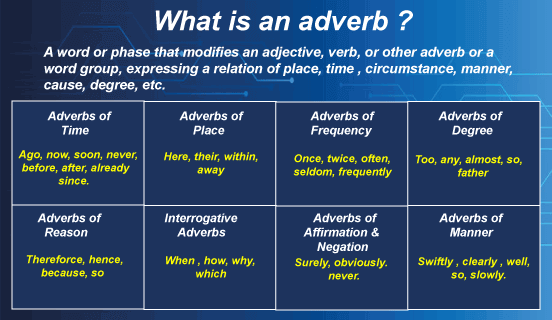
Recognizing an AdverbWhen you check the list of adverbs, you will notice that several of them, along with most adverbs that change verbs, finish in -ly. Other adverbs, however, do not match the same rule. The best approach to recognize an adverb in a statement is to figure out what it does in the sentence. Types of AdverbsAdverbs are classified into five types, each of which answers a different question. They are as follows:
Conjunctive adverbs are another sort of adverb - like also; besides; meanwhile or likewise. One can also change the entire statement by using sentence adverb (like "Thankfully" or "Indeed") at the start. Adverbs, which were once thought to be a single part of speech, fulfill a wide range of tasks, making it hard to regard them as a single, coherent category. However, identifying an adverb, particularly one ending in -ly, is simple. Adverbs typically serve to present a more complete picture by detailing how something occurs, such as
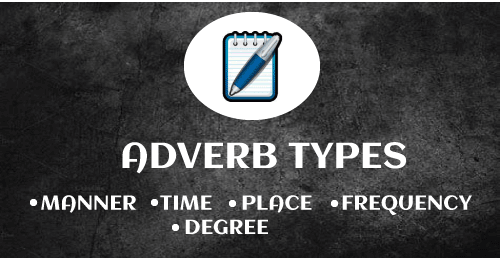
The adverbial function is defined as supplying extra information about how something is performed, and it can be accomplished by employing adverbial clauses and adverbial phrases, as well as adverbs that stand independently. There are numerous rules for utilizing adverbs, and these rules frequently vary depending on the type of adverb. Following these fundamentals and employing adverbs to make statements more meaningful will become natural and easy for you. Adverbs are always useful for modifying verbs. The second of these two statements is far more intriguing merely because it includes an adverb: The cat ran (You can imagine a cat running, but you don't know much else about the situation.) The cat ran joyfully. (Imagine a cat running around, licking excitedly, and looking happy to meet its owner. When you know how or why the cat is running, you may construct a far more intriguing mental picture.) 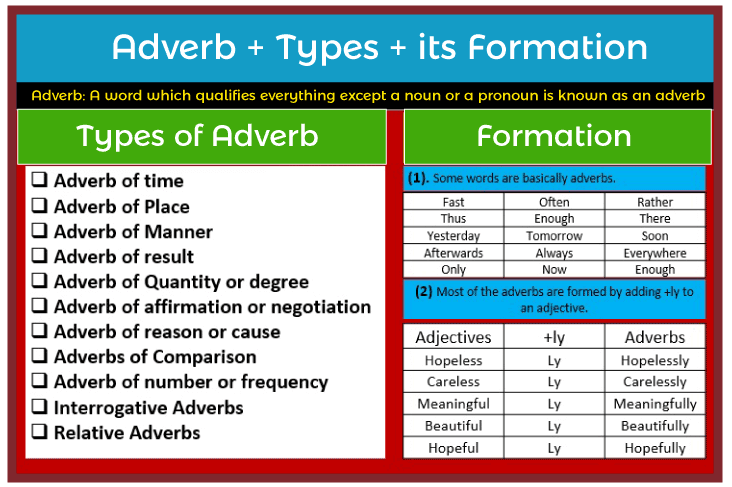
Adverbs are frequently constructed by prefixing adjectives with the letters "-ly." This makes identifying adverbs in statements a breeze. There are several exception to this rule, encompassing everywhere, nowhere, and upstairs. An adverb can then be used to alter an adjective and enhance its meaning. As an example: John plays basketball well. (He knows how to play basketball and occasionally scores.) John plays basketball extremely well. (He knows how to play basketball so effectively that he frequently scores.) Identifying Adverbs in a SentenceAdverbs are frequently known for being more expressive or describing words in a statement. Once you've found the adverb, you can figure out what queries it is replying. As an instance:
It's worth noting that you may eliminate all of these adverbs without changing the sense of the phrases. "The puppy ate his supper," for example, still makes sense. However, adding the adverb "haphazardly" to produce "The puppy haphazardly ate his supper" paints a more vivid image for the reader. 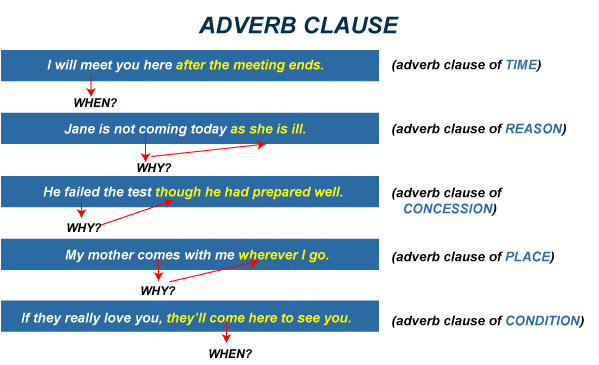
Adverb Placement in a SentenceAdverbs can be found in three different positions in a phrase or clause, based on the type of adverb. Positions for adverbs involve:
Adverbs are typically found at the end of a phrase, clause, or sentence, following the words that they change. Sentence adverbs, conjunctive adverbs, and temporal adverbs are frequently found in the first position, whereas action adverbs are found in the center of the statement. 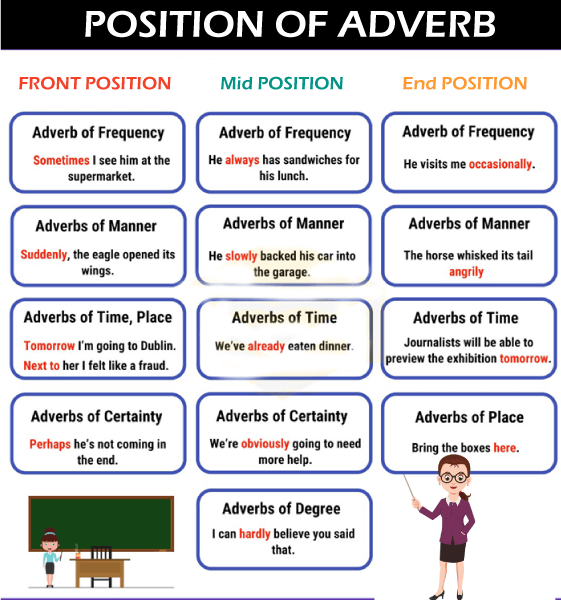
Common Mistakes with Adverbs and AdjectivesSince adverbs and adjectives both alter other terms, individuals frequently and mistakenly employ an adjective whenever an adverb should be used and vice versa. As an example: Incorrect - She behaved very poor on the school trip. Correct - She behaved very poorly on the school trip. The first phrase is erroneous since "bad" is an adjective used to describe the verb "behaved." Substituting or modifying the term "bad" to the adverb "badly" explains the verbs appropriately. That isn't always the situation, however: Incorrect - I feel badly about nixing our timetable. Correct - I feel bad about nixing our timetable. Adjective, not adverb, accompany linking verbs like "feel." This is because linking verbs do not strictly show the action of the phrase; they just connect the sentence's subject ("I") to the subject complement ("bad"). Another typical adverb vs. adjective mistake involves the terms good and well since "good" is an adjective ("You are good at drawing" - "good" changes "you"), but "well" is an adverb ("You draw very well" - "well" changes "draw"). When you've mastered these distinctions, you will hardly make these kinds of mistakes. The basic way to inform if a phrase is the adjective or the adverb is to consider the terms or the words it changes. It is an adjective if it changes the nouns or the pronouns. It is an adverb if it modifies anything else. Adverbs alter verbs, adjectives, clauses, and other adverbs, whereas adjectives only modify nouns and pronouns. Noun and pronoun are not changed or altered by adverb. 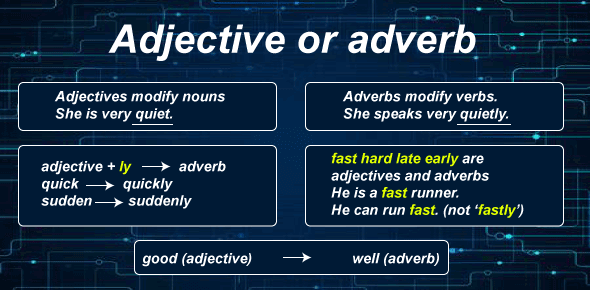
Rules of Adjective Vs. AdverbsRule 1 : Several adverbs finish in -ly, but not all. In general, if a term can have -ly attached to its adjective type, do so to create an adverb. Examples:
Rule 2 : Adverbs that respond to questions how can generate grammatical issues. It can be hard to ascertain whether or not to use -ly. Prevent the -ly trap using linking verbs that relate to the senses, such as taste, smell, sight, and feel. Adverbs are frequently misused in such situations, which call for adjectives rather. 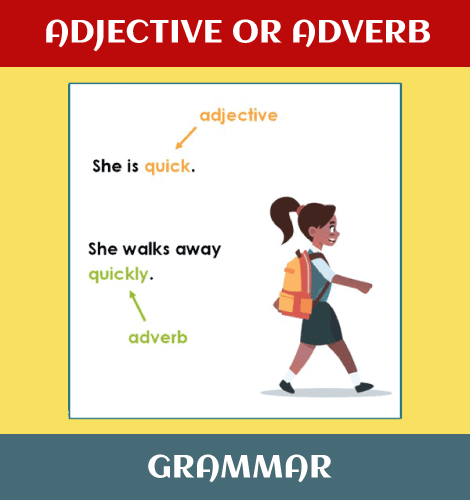
Examples: Tim's flowers smell sweet/sweetly. Do the flowers actively smell via noses? No; in this situation, the scent is a connecting verb, and roses require an adjective to be modified, therefore no -ly. Rule 3: The term good is an adjective with the adverb well as its adverbial equal. Instances: He did a good task Good defines the task. You did the task well. Well, replies how. Rule 4: The term well could be used as an adjective. When discussing health, we frequently say well instead of good. For example You don't seem well today I do not feel well, either. Rule 5 : Adjectives are classified into three types, sometimes known as degrees. A positive degree adjective is an adjective in its typical or customary form. There are also comparative and superlative degrees, which are utilized for comparisons, as shown in the examples below: Sweet; sweeter; sweetest efficient; more efficient; most efficient The incorrect kind of comparison is a typical blunder in the use of adjectives and adverbs. Just use a comparative adjective when comparing two things: For instance, Mary is the most clever of the two women (never cleverest) Rule 6: Adverbs are classified into three levels. When employing the comparative form of an adverb, do not remove the -ly suffix. Brian spoke quicker than Dong, which is incorrect. Brian spoke more quickly than Dong did. Incorrect: Speak quieter. Correct: Speak more quietly. 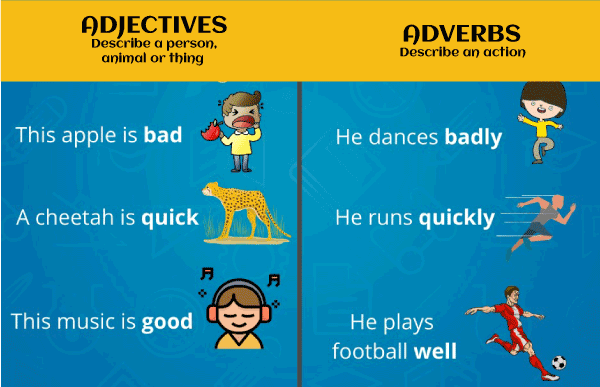
Rule 7: Adjectives are used when this, that, these, and those are accompanied by the nouns. They are pronouns if they come without a noun after them. Examples: This property is for sale. This is an adjective. This is for sale. This is a pronoun. Adverbs must be practiced. Adverbs amplify the specificity of nouns and modifiers. While adverbs can help make your writing more descriptive and vivid, the only way to master them is to use them more frequently and practice them often. When should adverbs be avoided?Many eminent writers in English Grammar often advocate that adverbs should be avoided when not required and should not be used unnecessarily. In truth, it is impossible to avoid using adverbs entirely. We need them from time to time, and all authors do. The key is to avoid superfluous adverbs. Rather than going for an adverb for adding colors when your verbs or the adjectives do not appear to be strong or specific enough, consider employing a strong verb or adjective rather. Oftentimes, you will find a preferable term, and your content will be well- built as a result.
Next TopicPronoun Exercises
|
 For Videos Join Our Youtube Channel: Join Now
For Videos Join Our Youtube Channel: Join Now
Feedback
- Send your Feedback to [email protected]
Help Others, Please Share










